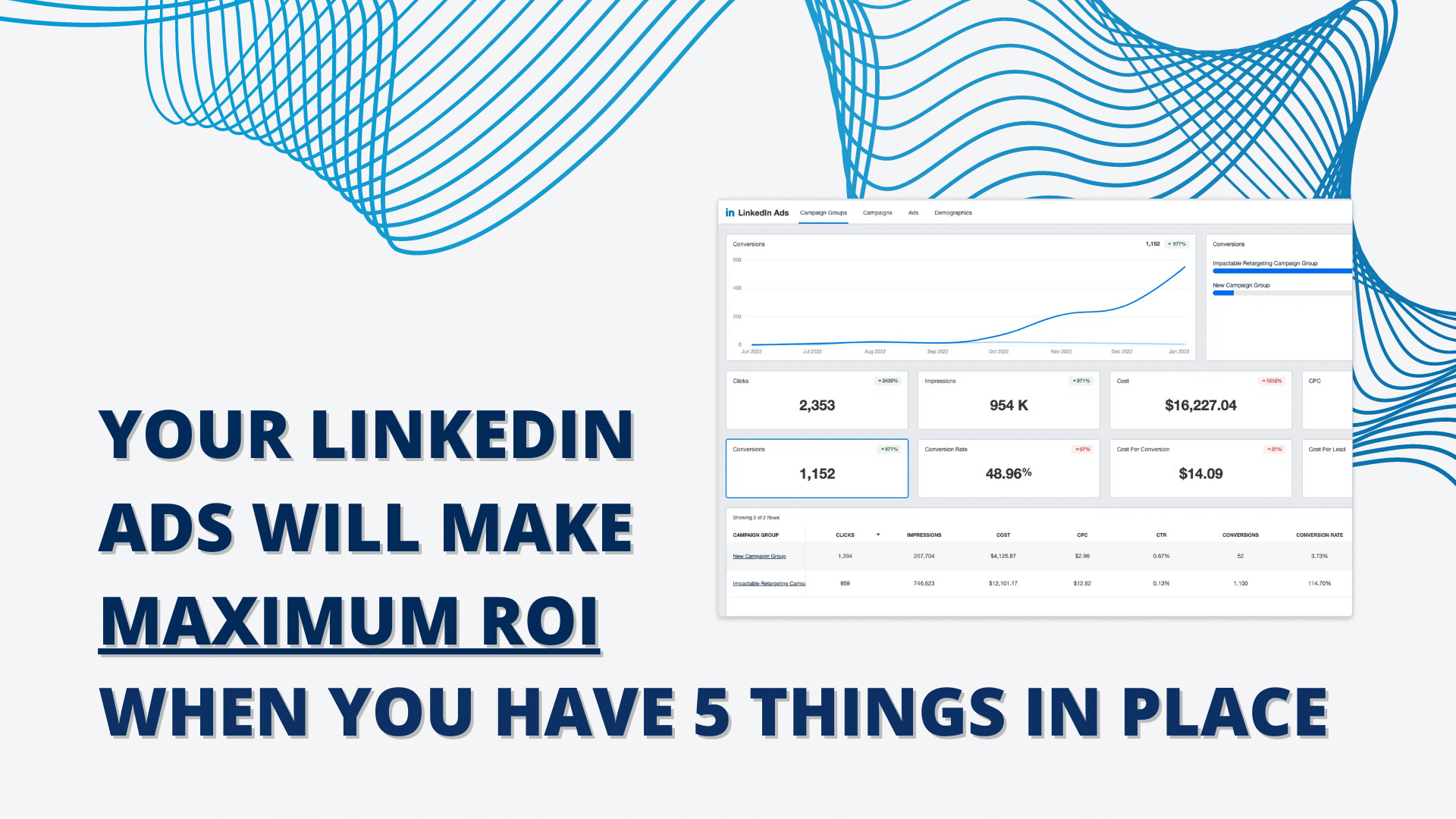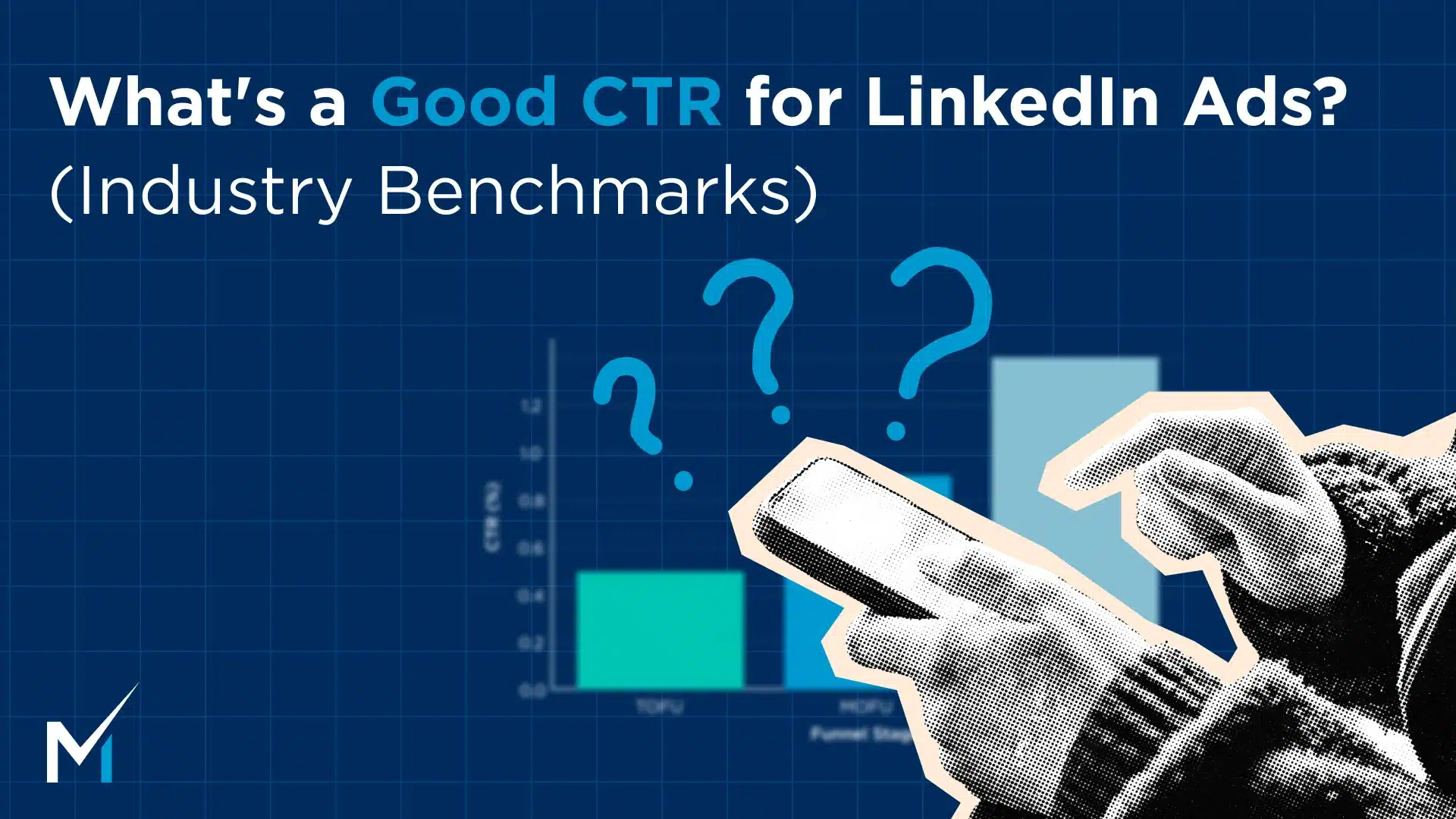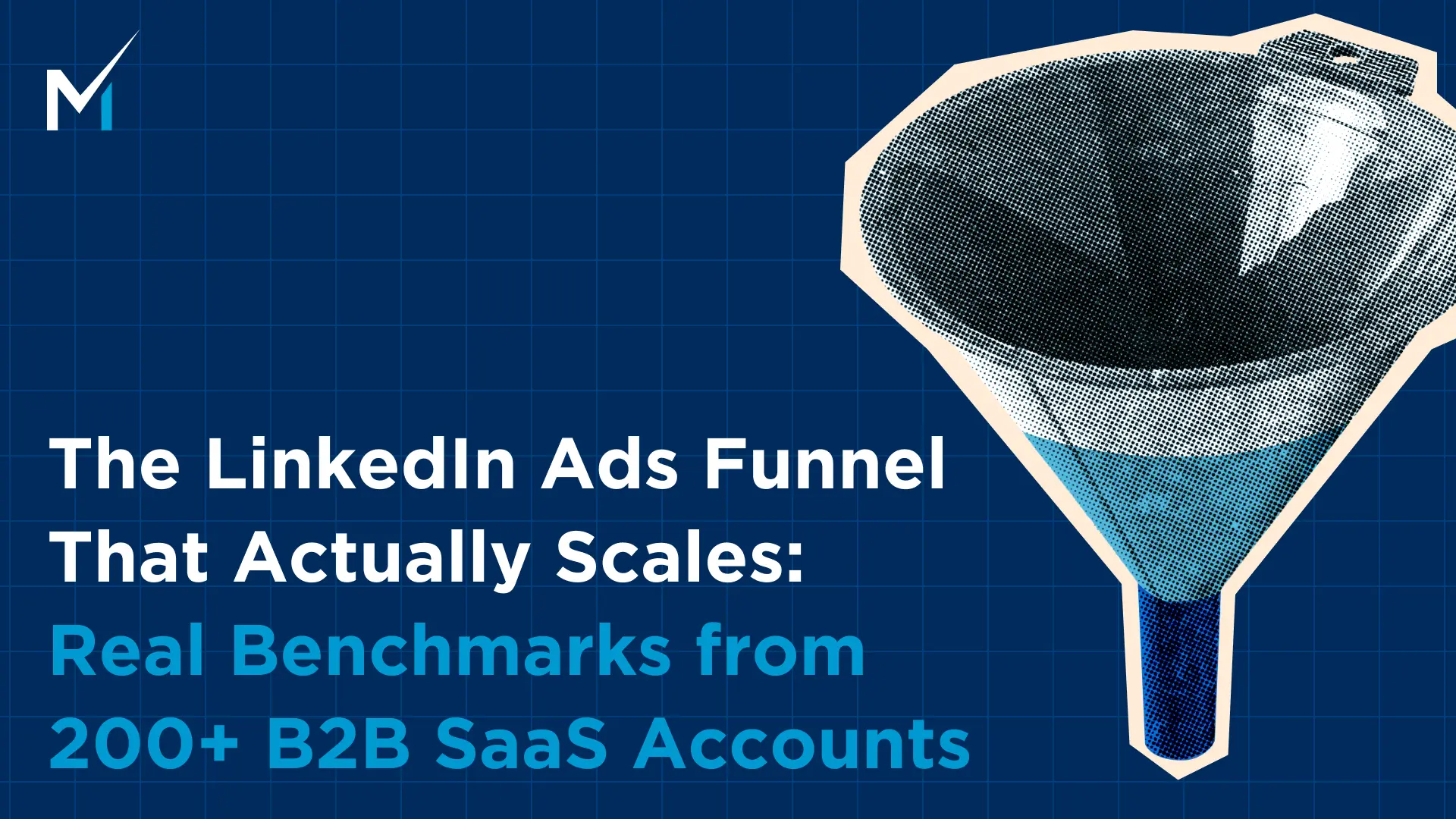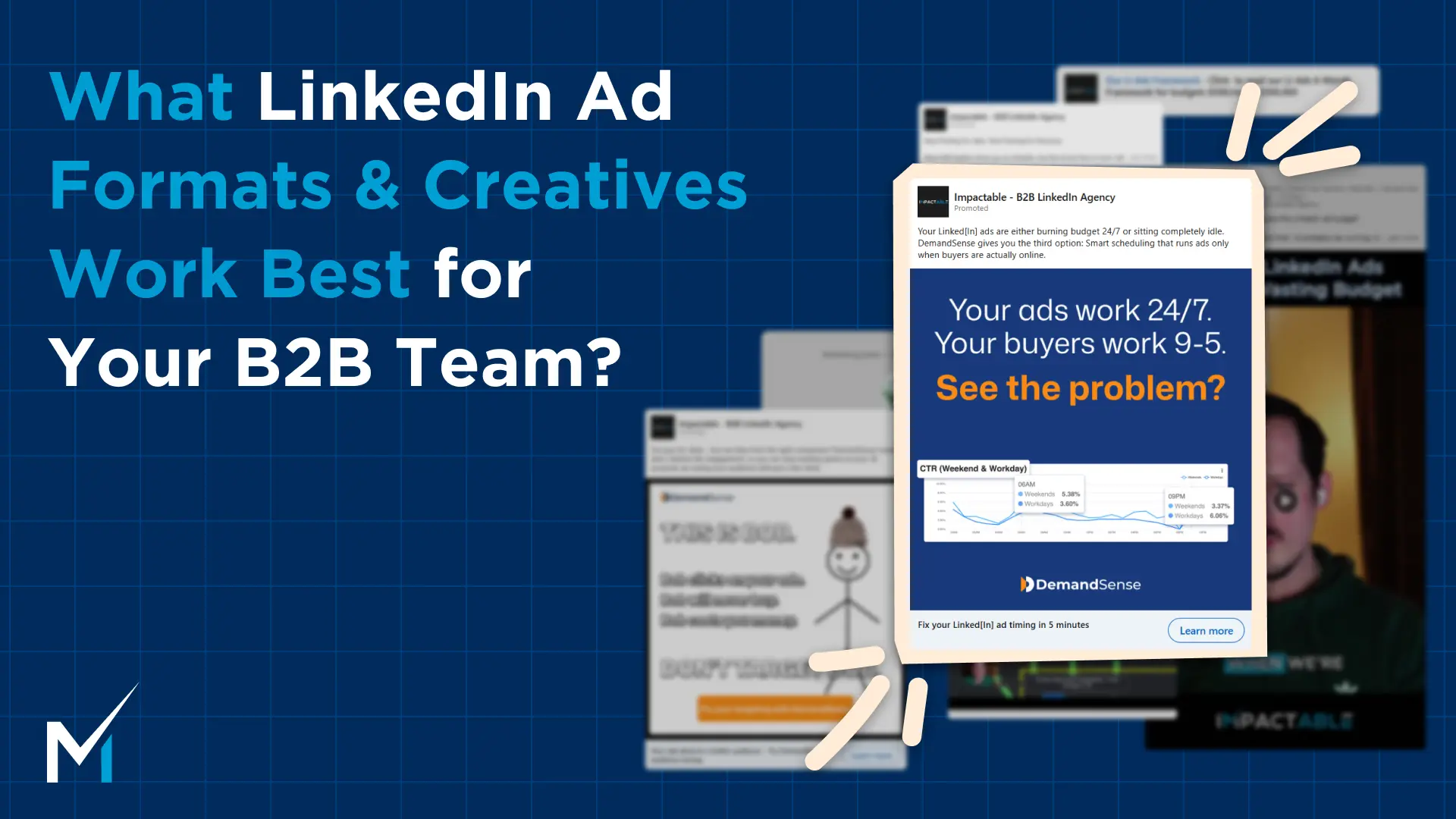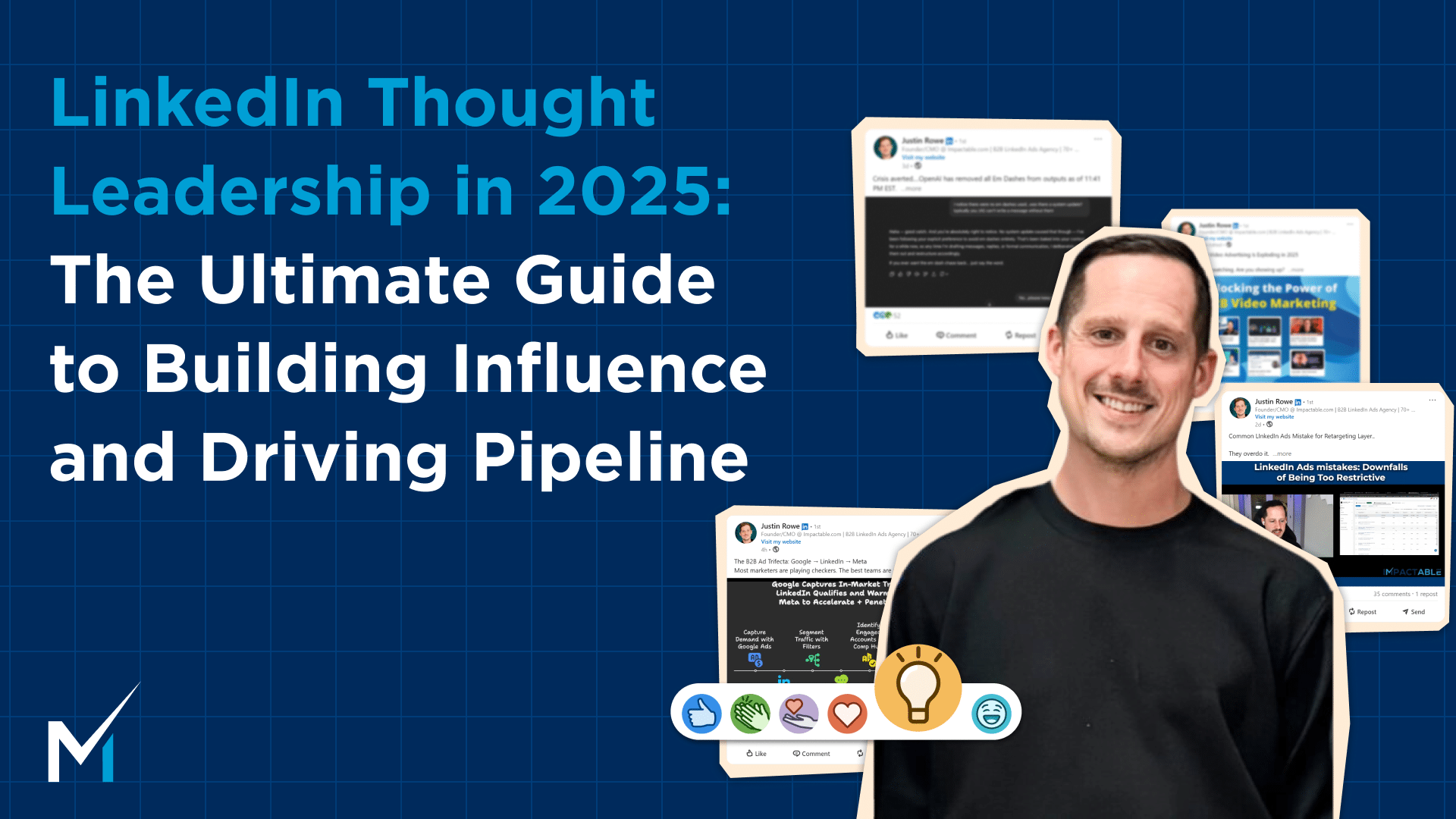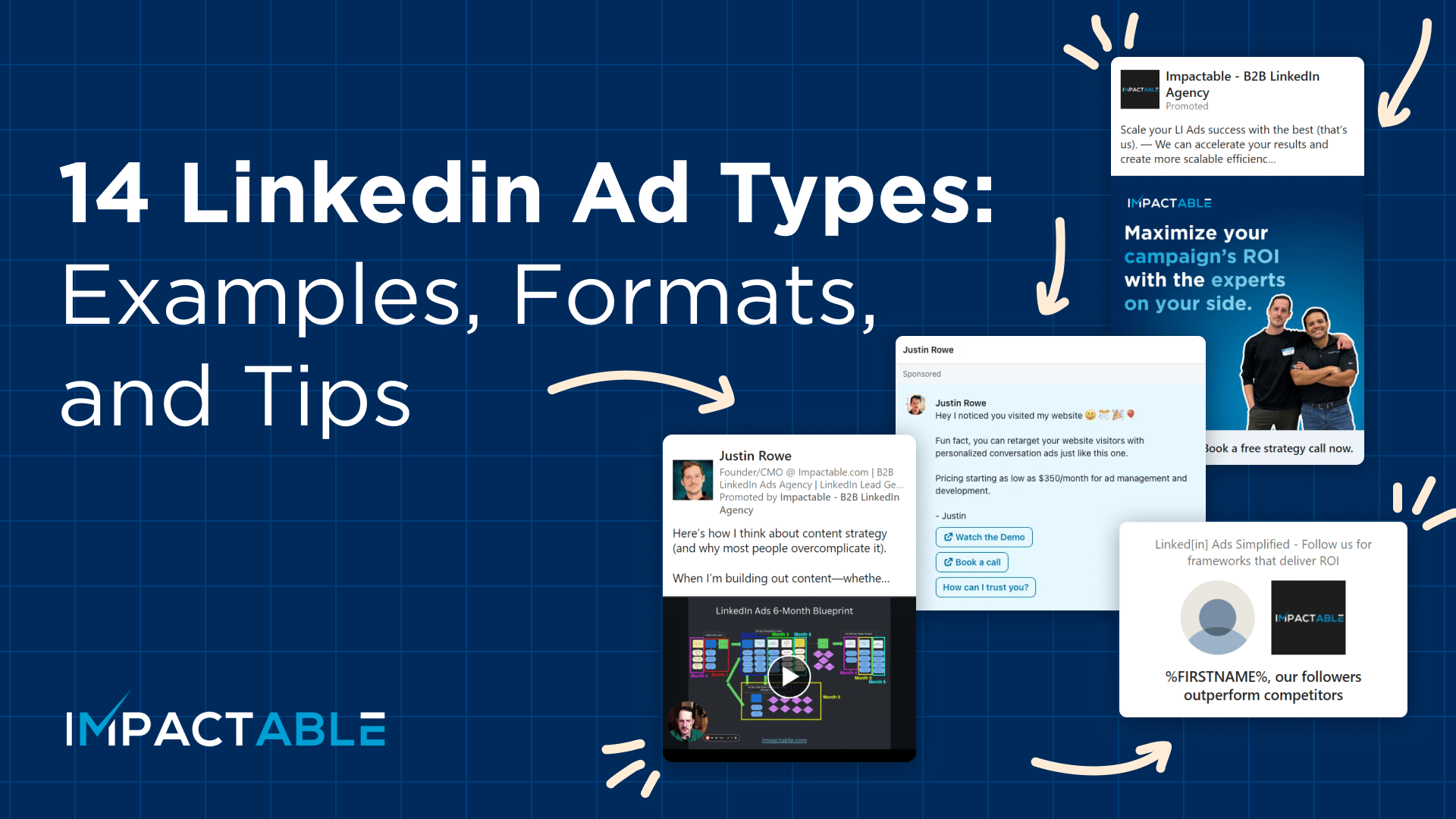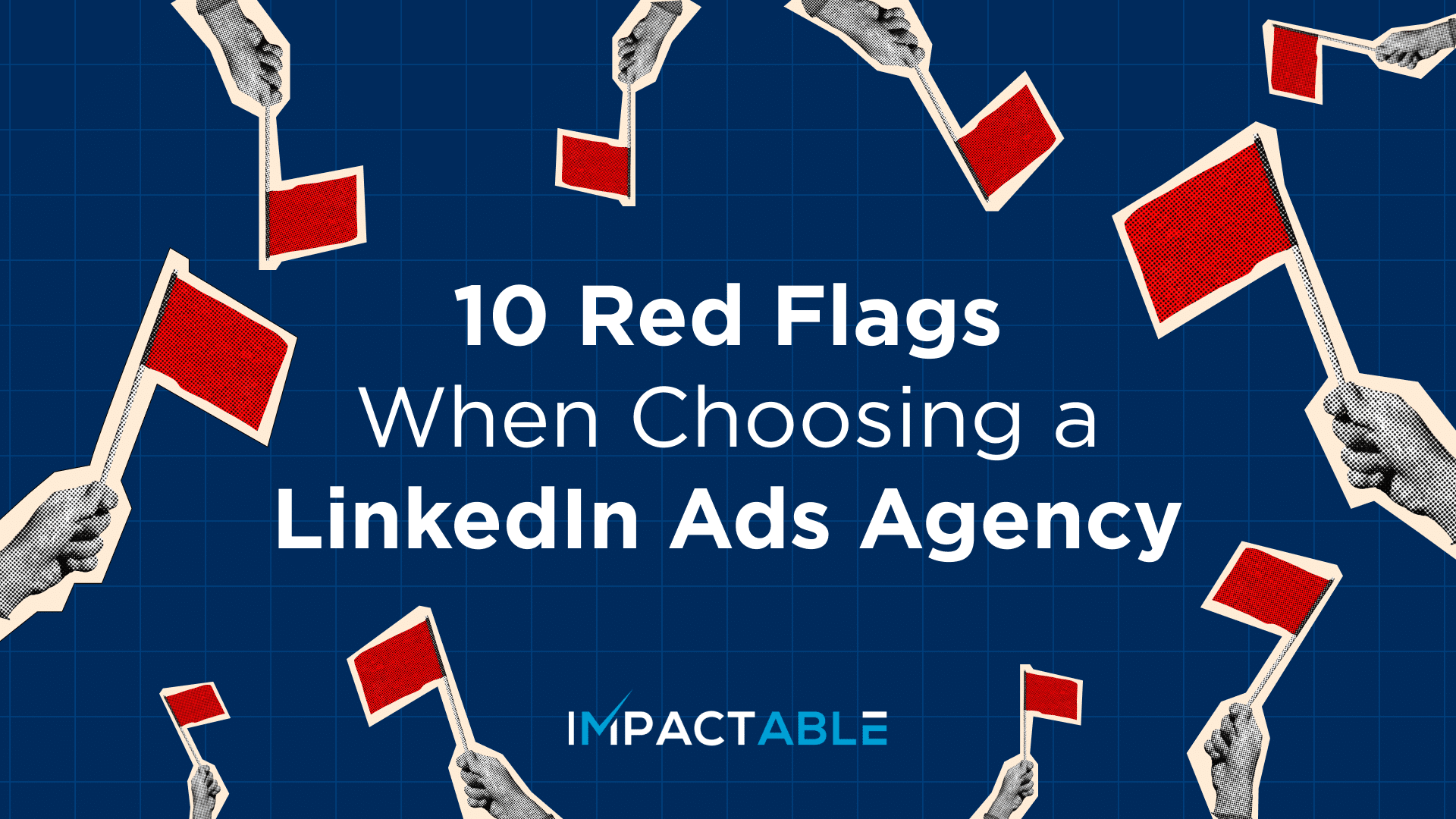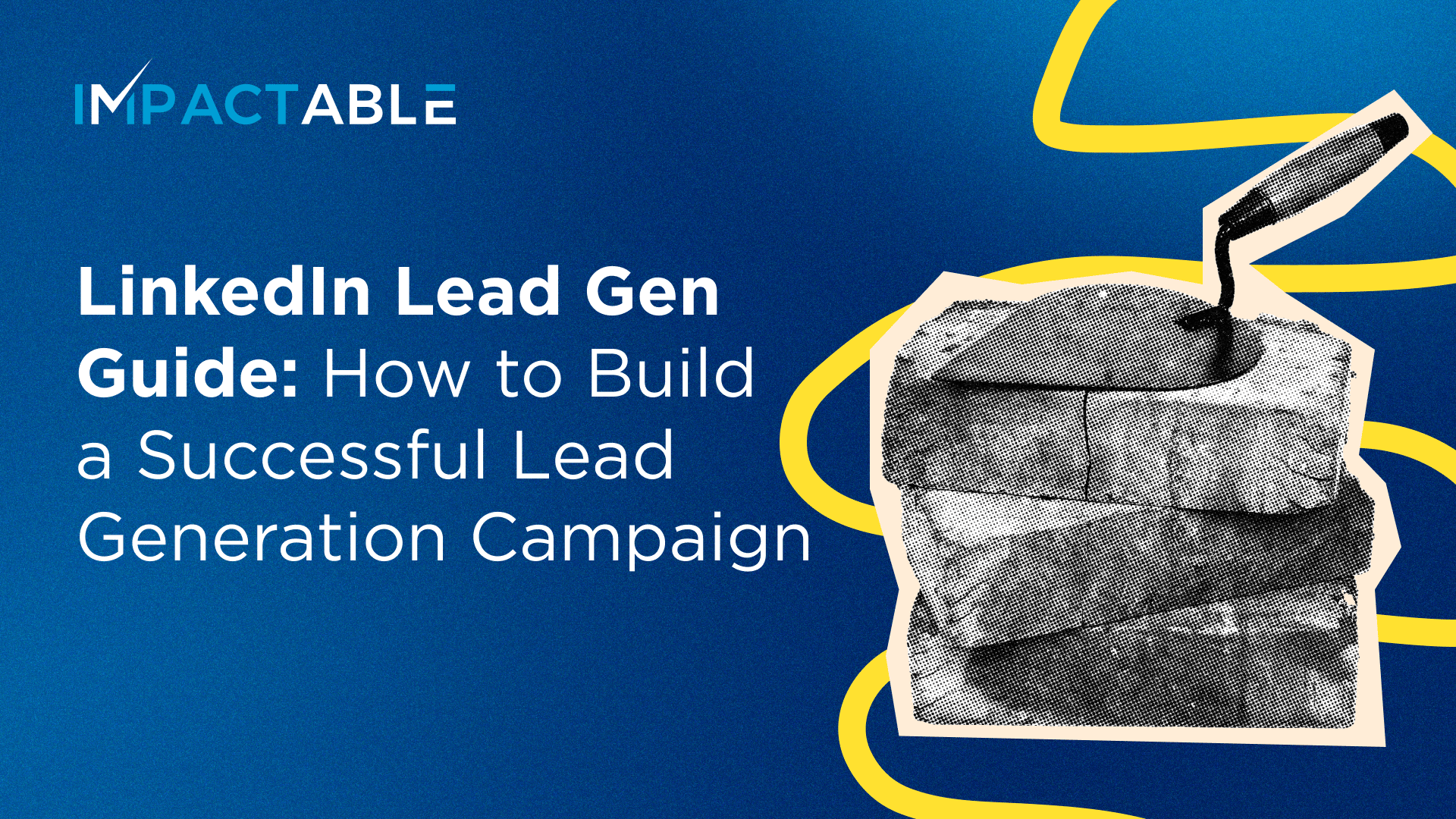Many of my clients and audience usually ask me how long it’ll take to see great ROI from their LinkedIn ads. Like other forms of marketing, seeing results depends on multiple factors.
To answer that, I’ve covered the five components you’ll need for your ads to work well and three scenarios that can help you understand whether your ads will work or not. They’re not a one size fits all scenarios, but depending on which of these buckets you fit in, you’ll know how to improve.
Get Higher ROI When These 5 Components Are in Place
Let’s go over what these components depend on, then the three scenarios to see a positive ROI with LinkedIn ads.
1. Overall website traffic (quality traffic)
The first one is your overall website traffic. The amount of traffic you have to your website and how much quality traffic you already have to your website determines when and how LinkedIn ads can start showing a profit.
LinkedIn doesn’t work in a silo. LinkedIn insights tag picks up on your website traffic from all your other sources, qualifies it with filters, retargets it, and converts. If you have more website traffic, you have a greater chance of making more ROI from LinkedIn and can do it faster.
In these scenarios where there is already quality traffic to the website, LinkedIn can then focus more on retargeting and converting that traffic vs. just focusing on producing more top-of-funnel traffic.
2. A decent website or a landing page to convert LinkedIn ad traffic
The second thing you need is a decent website or a landing page because the best quality traffic in the world hitting a poorly performing website isn’t going to produce amazing results.
So if you already have a mature, optimized website that converts traffic into meetings, that will also help you produce an ROI from LinkedIn ads and shorten the time frame in which we do it.
Until you have this figured out, it’s a lot like pouring water into a leaky bucket.
3. Knowing your LinkedIn target audience
If your LinkedIn ads don’t reach the right audience, you’re wasting your time and money. Many of our clients have an idea who their target prospect is, but they don’t necessarily know the best people to target on LinkedIn. They might know that they serve five or ten industries, a company size range, and three particular geographies. So they know the people working in those companies to target, but they don’t know that their targeting is still too broad.
Ideally, you would know two or three industries and the company size you work best with.
It’s the same with geography. There’s a difference between the conversion rates between UK, US, and Canada. There’s a difference in conversion rates and how effective your marketing is at the size of 10-50 staff vs. 50-200.
There’s also a difference in whether you should be talking to the founder, owner, CEO, or VP director level.
Usually, we eventually uncover those answers with LinkedIn ads by running ads and analyzing data. We start targeting broad, as the client requested, and then over time, we start to get more information to share with them. For example, they told us that they served 10 particular industries, but 80% of their results came from three industries.
Knowing this, we can create some special campaigns for that, and we can drop the lowest-performing ones.
So the more you know about your target audience, the better. It gives you a better chance of making more ROI with LinkedIn in less time, so you can save more time and money.
4. Trust factors
Another factor is trust and credibility. If you are a more well-known brand, that is, you’ve already established a strong presence in your market, which saves you much time. Instead of convincing everyone who’s never heard of you that you’re an expert in your space, you’ve already done the work, and the people you were attracting have already heard of you.
Having assets around this, such as interviews with notable leaders, press releases, company in the news, testimonials, case studies, and things of that nature, can make a big difference in the success of a LinkedIn ad campaign.
5. Your product offer market fit
The last factor is your actual product offer market fit.
Do you actually have it figured out?
Do you know exactly who you serve?
Is your offer specifically enticing to them at a price point that’s acceptable in the market?
Many times, you’ll find that if you don’t have that piece nailed down, you end up in a trial-and-error cycle. It can take more time to see an ROI because you’re testing different offers on your target audience, and you’re trying to see what the price should be or if it’s not too high.
Three Scenarios Where to Expect a Positive ROI with LinkedIn Ads
I put those components previously listed into three ideal scenarios:
Scenario #1 – The ideal one
If you have all or most of those components in place, that’s an ideal scenario. You’ll have a mature marketing ecosystem, product-market fit, and a well-optimized website.
There’s no reason that you shouldn’t be able to set up your LinkedIn ads and see a return on your investment within the first 45-60 days because you should be able to set up retargeting audiences, start more on the retargeting side, and not rely on LinkedIn cold campaigns to drive traffic, and then convert them and nurture them. You should be able to tap into existing mature website traffic and convert that traffic.
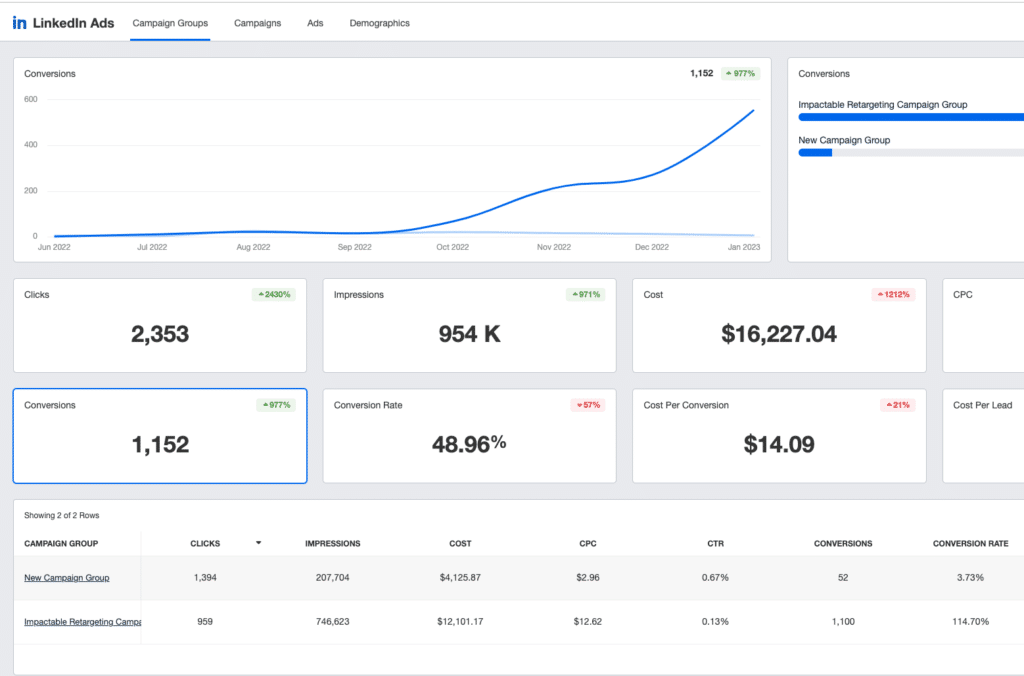
Here is an example of a client with everything in place and a mature marketing ecosystem that was profitable within 30 days and then continued to improve momentum
Scenario #2 – Frequent case
In the second scenario, you have a couple of those components. You have a good website and some quality traffic already hitting your website, Google Ads, and you’re confident with your targeting and fit. I’d call this a decent case.

In this example, the client had some components in place that helped but didn’t have the most mature marketing ecosystem in place yet. It took about 3 months to get to a level of profitable ROI and then even more time to be able to stay above that line.
It usually takes 3-4 months to carve out a profitable ROI in that scenario. We are leveraging LinkedIn cold audience to drive a funnel. We also have some existing website traffic to convert, pull through and get us that all faster.
Scenario #3 – Not quite ready to leverage LinkedIn ads
In the third scenario, you only have a few important components in place. When you start looking at LinkedIn ads, you don’t have a mature marketing ecosystem sending quality traffic to your website, your website needs an update, and you’re also unclear about your targeting and your product-market fit.
That is not an ideal scenario, and we usually encourage people not to run LinkedIn ads because it’s harder to get success. However, for the people that do follow through, it’ll take some time because they’ll use LinkedIn ads to figure out their product-market fit, their pricing, and get feedback on who they should be targeting and who they should focus on.
It could take up to 6 months to get a positive ROI from LinkedIn if you are starting from scratch and you don’t have any of these components in place. It could also take ~$5,000 a month for 4-6 months to get a positive ROI out of LinkedIn ads.
In that case, you’re set if you have the money, budget, and patience. If you are hoping or needing something a little faster, I would suggest that you focus on SEO, Google ads, and setting up other foundational components because LinkedIn won’t work well in that scenario.
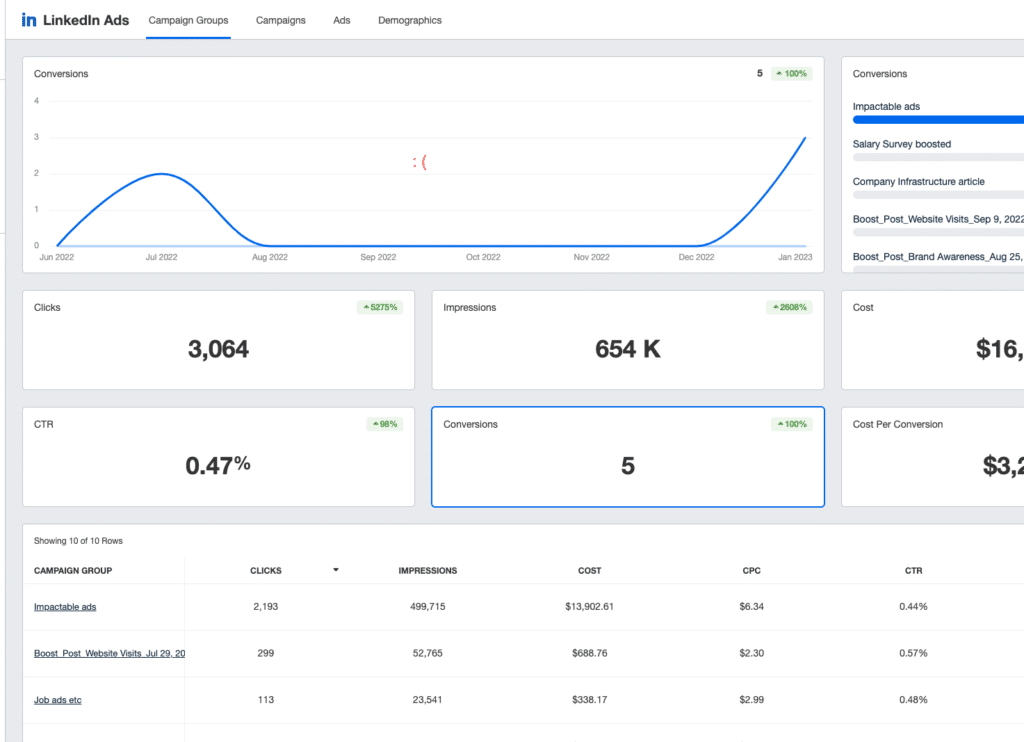
In this example, we still haven’t gotten profitable ROI even after 4+ months.
To Sum Up
For your LinkedIn ads to perform well, you’ll need quality traffic, a decent web page, deep knowledge of your target audience, high brand trust, and a good product offer market fit.
Ultimately, the results from Linkedin ads will depend on other factors, such as how mature the company and its marketing ecosystem are. Linkedin as a channel works best when implemented in a mature marketing ecosystem where quality traffic is already being produced and is converting.
Impactable is happy to act as a guide to see if this channel might be a good fit for your company with where you are at now or if there are other options to consider instead.


